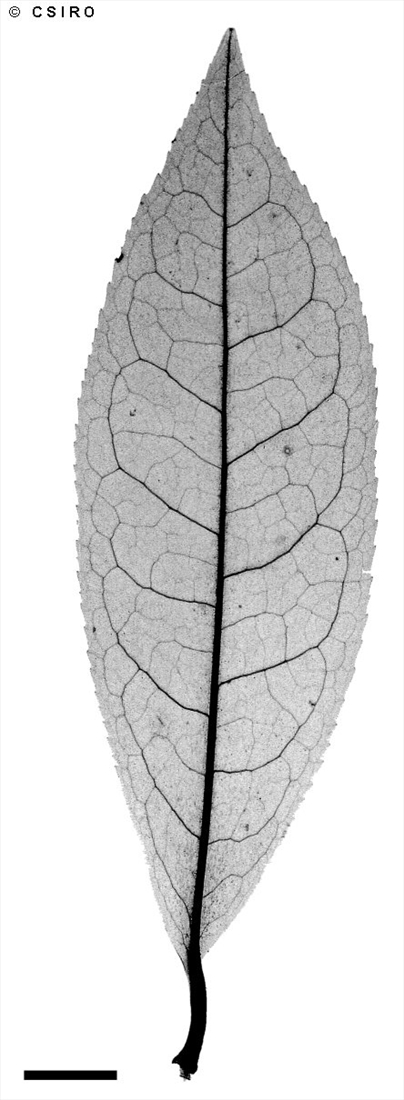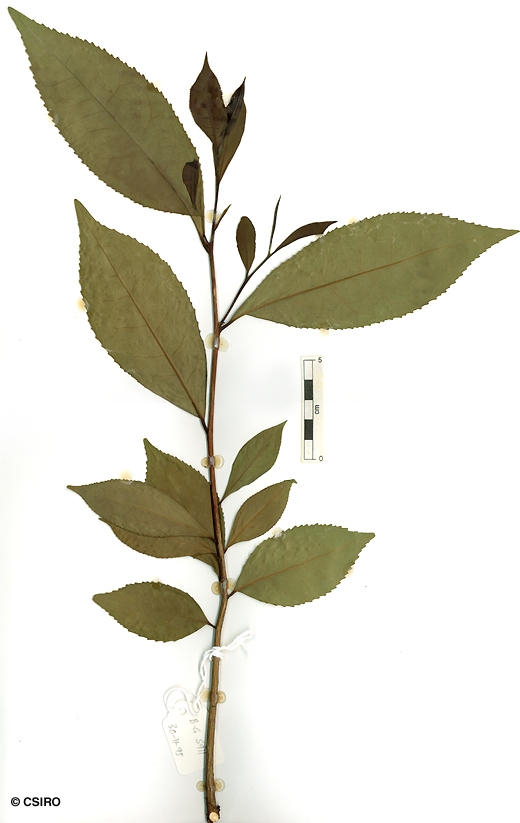Australian Tropical Rainforest Plants - Online edition
Camellia sinensis (L.) Kuntze




Kuntze, C.E.O. (1887) Act.Hort. Petrop. 10: 195.
Chinese Tea; Tea; Common Tea; Tea Bush; Japanese Tea
Occasionally grows into a small tree but usually flowers and fruits as a shrub 2-4 m tall.
Flowers pleasantly perfumed. Calyx lobes dimorphic, outer three, about 4 mm long, inner three, about 3 mm long. Petals dimorphic, inner three or four, about 17-18 mm long, outer three, about 10-14 mm long. Ovary longitudinally ribbed, densely clothed in straight, white, appressed hairs, ovules about 4-6 per locule.
Capsules usually 3-lobed and broader than long with one seed in each lobe, calyx persistent at the base. Seeds about 10-15 x 10-12 mm.
Cataphylls (4 or 5) produced before the first pair of true leaves. First pair of true leaves with toothed margins. At the tenth leaf stage: leaf blade with about 40 teeth on each side. Seed germination time 46 to 776 days.
An introduced species originally from China now naturalised in places in NEQ. Altitudinal range from near sea level to about 700 m. Grows on old farmland and in disturbed areas in lowland and mountain rain forest.
Large areas of this shrub or small tree are cultivated in Australia and overseas for the production of tea.





